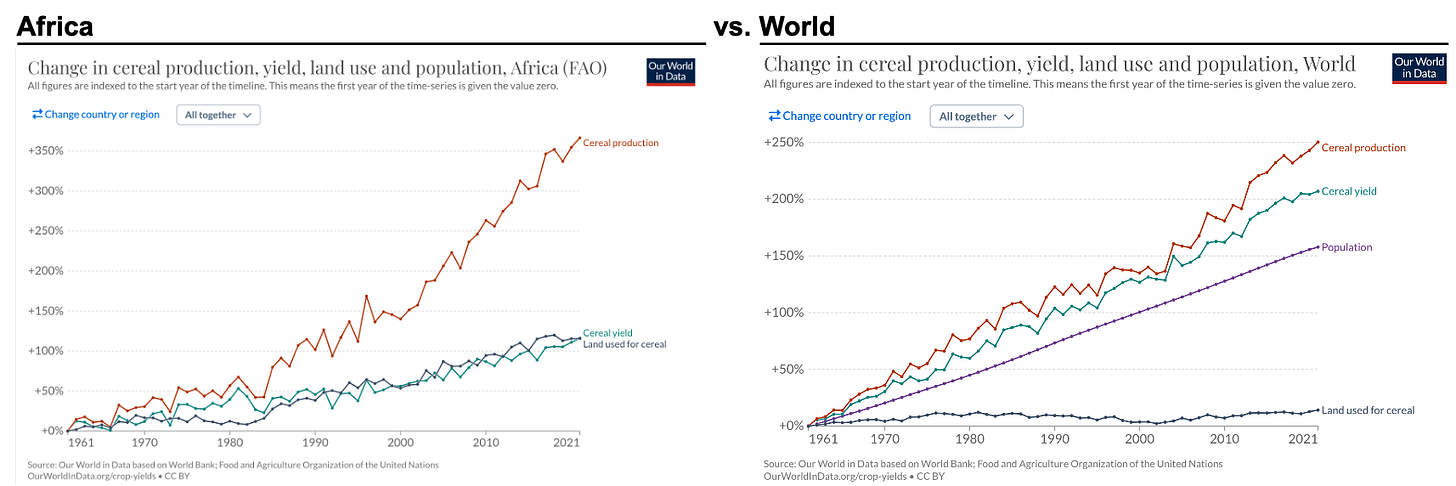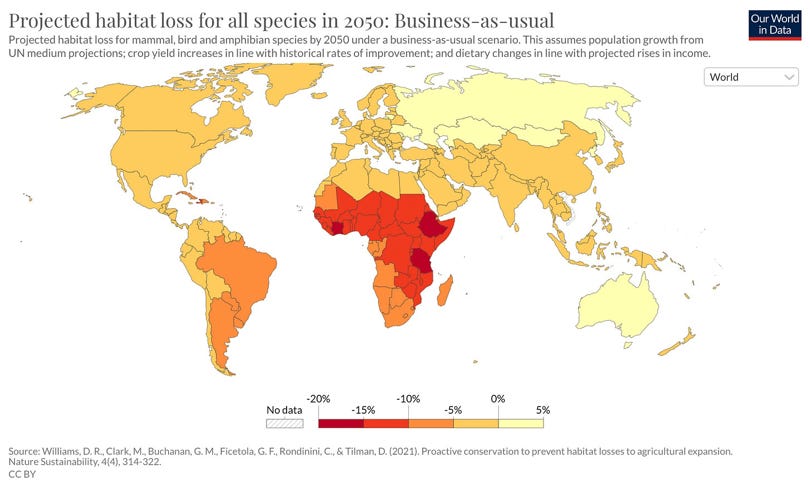Why sub-Saharan agricultural yields matter
Increase in agricultural land use threatens species' natural habitat
Increasing productivity in farming is crucial to fight hunger, protect wildlife and reduce deforestation. Sub-Saharan Africa lags considerably behind in land productivity.
Africa has been compensating lack of yield increase with higher land use for decades.
Change in cereal production, yield and land use Africa vs. World
In a business-as-usual scenario, substantial habitat loss for all species is expected in Sub-Saharan Africa.
Higher land use threatens biodiversity and leads to deforestation. Countries like Ethiopia and Tanzania are expected to lose over 15% in habitat by 2050.
Solution: Close yield gaps.
What else would help? Healthier diets, throwing less away and optimizing trade. Combined those interventions even could reduce the agricultural land needed in 2050 compared to today.
3 ways how investments can contribute to increasing yields in Sub-Saharan Africa
Access to financing or affordable credits would enable farmers/communities to:
Develop improved infrastructure such as irrigation systems, roads, and storage facilities.
Access higher quality inputs such as improved seeds, fertilizers and pesticides.
Adopt innovative technologies such as modern farming techniques (e.g., efficient water management, soil conservation, crop diversification), better machinery and digital tools that optimize productivity.
Interested to dive deeper? Check out Disrupt Africa’s latest podcast series on the African agri-tech space.





